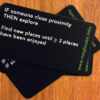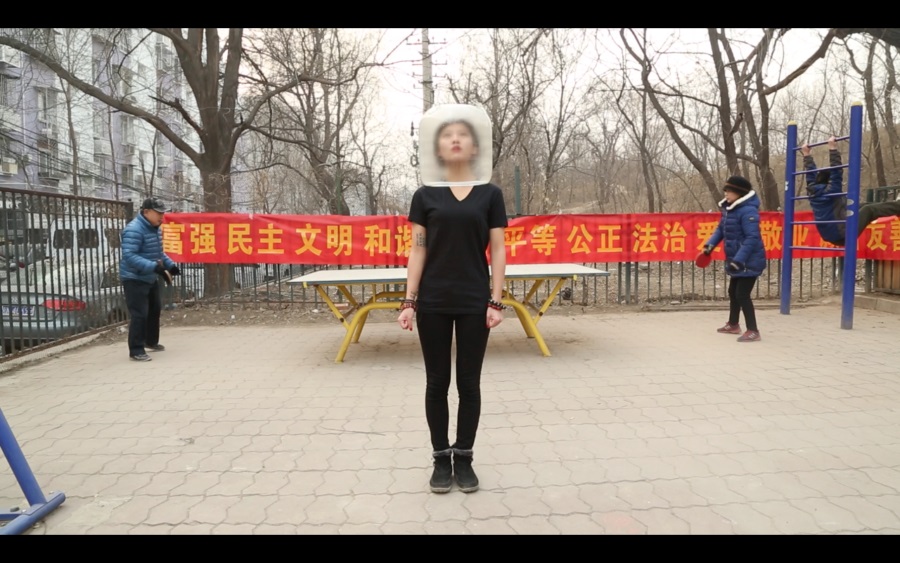Stefanie Yan
Breath Under, Live With
Video; 06:05
During my trip back to China in the winter of 2015, I noticed many red banners proclaiming contemporary Chinese ideologies displayed in nearly every public space in the Chinese cities I visited. These banners announced the “Socialist Core Values” publicly encouraged by Chinese President Xi Jinping at the 18th Communist Party Congress in 2012. The doctrine promotes twenty-four ideals which, in Chinese, are represented by a single character or simple arrangements of characters. They are: prosperity, democracy, civility, harmony, freedom, equality, justice, the rule of law, patriotism, dedication, integrity and friendship, among others. Often, in these public spaces there are also stickers placed on top or near these banners by people illegally advertising such services as “Make Fake Licenses, Fake Stamps,” “Professional Dig Holes,” “Clean Tubs and Sinks,” and “Cure Sexually Transmitted Diseases.”
An interesting and ironic combination occurs when these two types of ads inhabit the same space — which ones should we look at? Are people in China really aware of what the ads and banners actually mean to them, or to the country? With these thoughts in mind, I turned the Chinese characters written on the banners (Socialist Core Values) into a meta-language, and instead of further emphasizing the meaning of the doctrines, I deformed the words by putting stickers over them, allowing the Chinese characters to return to their original pictographic terms—which are not to be seen for their meaning, but simply as pictures. I believe that the idea of “code-switching” exists in the switching of languages and connotations, but also can indicate the switching between the linguistic and the visual aspects of the language itself. In this work, I use this strategy in order to decrease the meaning of the characters while simultaneously highlighting the ignorance involved in the viewing of these banners in China.
This idea originated because the characters on the banners stood out so much for me, which made me wonder about the exact meaning of each of the Chinese characters in relation to the public spaces they occupied. I became fascinated when I noticed that the people who walked by these banners did not seem as excited as I was, instead treating them as a part of the public decoration. As an artist, this project began with my individual interests but through further research into relevant topics, I realized that the power of the language could exist beyond its original form, conveying the relationship between people and language through a socio-cultural lens.



